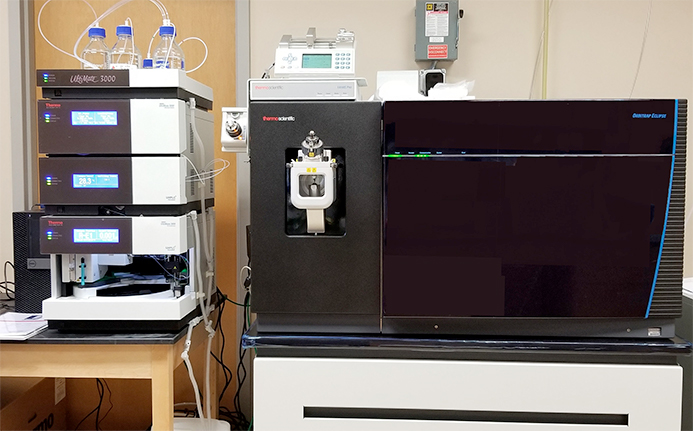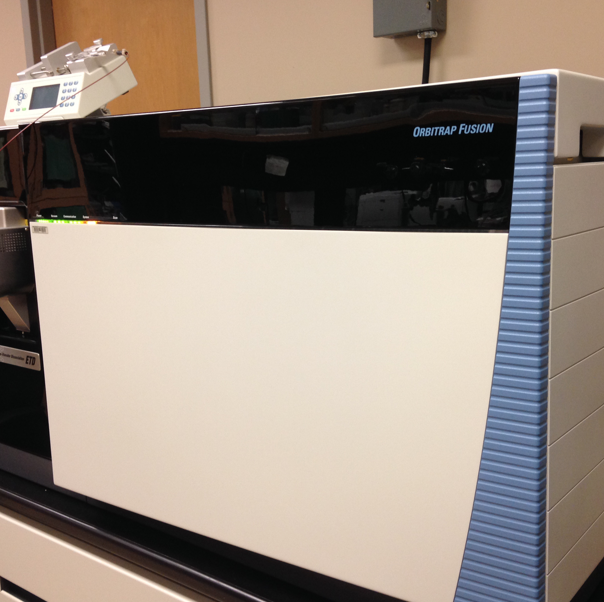Techniques
MALDI-and ESI-MS
MALDI-and ESI-MS are used for the elucidation of glycoconjugate structures from various biological samples. In general, a smaller amount of sample is needed by these techniques compared with other analytical techniques.
- For single purified glycoprotein, a sample amount that would provide a minimum of 500 pmol of analytes would produce a clear result. A relatively higher amount is needed for crude glycoprotein origins like tissues. For cells, a count of not less than of 107 is adequate to acquire a reliable data.
- Our laboratory has the expertise to process glycoproteins from a gel or gel pieces.
- Preferably, the sample should be pure, soluble in water or 50% ethanol in water and free of non-volatile salts, buffers, and detergents. However, our laboratory has the capability to process samples with potential contaminants.
Matrix-Assisted Laser Desorption Ionization Mass Spectrometry (MALDI-MS)
MALDI-MS is a fast and excellent technique for the determination of molecular weight (up to about 150 kDa) of oligosaccharides, peptides, glycopeptides, glycoproteins and other glycoconjugates.
- A sample could be analyzed in its native or derivatized form (e.g. permethylated oligosaccharides).
- Depending on the kind of glycoconjugate, a matrix is selected for crystallization (e.g. DHBA, CHCA), and an appropriate method based on expected molecular weights is chosen for acquiring data.
- Identification of signals is accomplished through the use of free access databases.
- MALDI MS provides a good profile of parent molecular ions present in the sample.
- The CCRC Analytical Services Laboratory has two (2) MALDI units; Applied Biosystems AB SCIEX TOF/TOF 5800 with high resolution, and Bruker microflex.
On-Line Liquid Chromatography-Electrospray Ionization-Mass Spectrometry (LC-ESI-MS)
LC-ESI-MS is an application for acquiring full MS and tandem MS/MS data to achieve detailed structural characterization of biological sample mixture or pharmaceutical drug product mixture. While separating the analytes by LC, MS analysis of each eluate is simultaneously archived on line.
- LC-ESI-MS is used mainly for the full characterization of a target protein’s N-and O-linked glycosylation, mapping of glycosylation sites and extent of glycosylation at each site.
- LC-ESI-MS is also used for the profiling of low molecular weight heparin and other pharmaceutical products.
- The CCRC Analytical Services Laboratory has an Ultimate 3000 nano LC interfaced to a Thermo Orbitrap Fusion, which is suitable for samples that are oftentimes very limited in quantity such as those for proteomics/glycoproteomics experiments.
- A Thermo Ultimate 3000 analytical LC coupled to a Velos Pro Orbitrap Elite is also available for applications that require high reproducibility and rapid profiling such as pharmaceutical drugs.
- Our LC-MS systems have Electron Electron Transfer Dissociation (ETD) and High Collision Dissociation (HCD) fragmentation capabilities, which allow in-depth structural characterization of analytes.
- Softwares are being used as tools for data analysis; Thermo Proteome Discoverer™ and Protein Metric’s Byonic ™.
Thermo Orbitrap Eclipse Tribrid
Electrospray/Nanospray Ionization Ion-trap Mass Spectrometry (ESI/NSI-MS and MS/MS )
ESI-MS is an excellent tandem with MALDI-MS analysis. Through MS/MS, ESI/NSI mass spectrometry is a confirmative technique for the elucidation of oligosaccharides, peptides and glycopeptides.
- A sample could be analyzed in its native or derivatized form (e.g. permethylated oligosaccharides).
- A method is being used to capture all possible ions present in the sample.
- Structures previously identified through MALDI-MS are confirmed, modified or deleted based on the fragmentation pattern observed.
- The CCRC Analytical Services Laboratory has four (4) ESI/NSI-MS units; Thermo Orbitrap Fusion, Thermo Velos Pro Orbitrap Elite, Thermo LTQ XL Orbitrap Discovery, and Thermo Finnigan LTQ MS.


